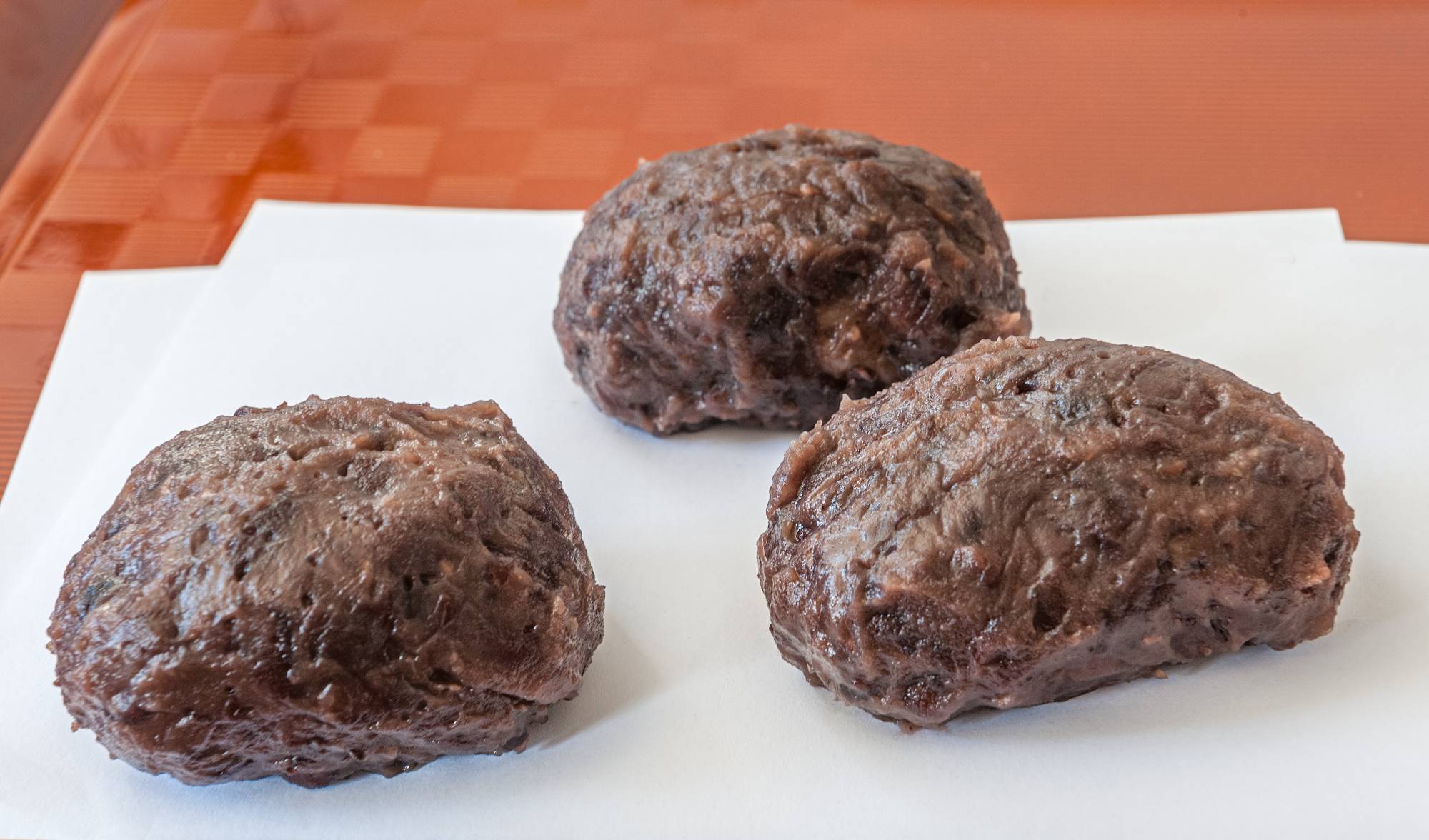While Japan loves its four distinct seasons, more important might be the period when one gives way to another — and winter yielding to spring might be the most welcome changeover of the year.
Botamochi are the traditional sweets served during o-Higan, the seven-day period surrounding the vernal and autumnal equinoxes, the former of which falls on March 21 this year. Botamochi are also offered on the kamidana, the household shrine, to pray for ancestors' souls. They are down-home sweets made of balls of rice that has been crushed to a state called han-goroshi (half-killed) instead of beaten smooth like mochi. The rice balls are covered with anko (sweet adzuki bean paste), which, aside from its delectably sweet flavor, is thought to ward off bad luck via its deep red coloring.
Although some food historians and other culinary experts say botamochi are made from koshian (smooth anko), and o-hagi (an identical rice-and-anko treat made for the fall o-Higan) are made with tsubuan (chunky anko), most people don’t differentiate between the two. The most popular theory is that botamochi are simply named after the botan (camellia) flower that's also offered to the kamidana while o-hagi are named for the hagi (bush clover), an autumn flower.



















With your current subscription plan you can comment on stories. However, before writing your first comment, please create a display name in the Profile section of your subscriber account page.